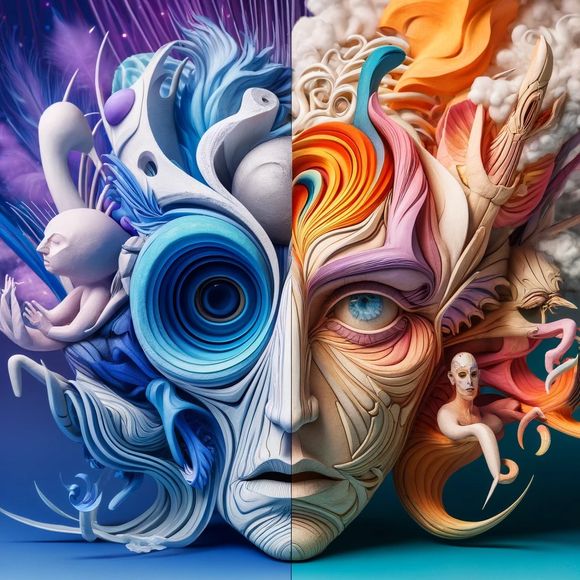Art is a mirror reflecting the depths of human imagination and emotion. It transcends boundaries, connecting cultures, eras, and mediums. Among the diverse forms of artistic expression, papier-mâché stands out as a versatile and captivating medium, offering a unique canvas for creative exploration. In this article, we delve into the captivating realm of papier-mâché, examining how influential artistic movements like Surrealism and Expressionism have left their indelible mark on this age-old craft.
Surrealism: Unleashing the Subconscious
Surrealism, born out of the tumultuous landscape of post-World War I Europe, sought to liberate the mind from the constraints of reason and delve into the subconscious. Artists like Salvador Dalí, René Magritte, and Max Ernst embraced dreamlike imagery, juxtaposing the ordinary with the extraordinary to evoke a sense of wonder and intrigue.
In the realm of papier-mâché, Surrealism finds a natural ally. The pliable nature of paper pulp allows artists to mold fantastical forms, blurring the lines between reality and imagination. Papier-mâché sculptures often embody the surreal aesthetic, with exaggerated proportions, distorted features, and whimsical motifs. Through this medium, artists can channel the subconscious, giving shape to the ineffable landscapes of dreams and fantasies.
Expressionism: Embracing Emotion and Subjectivity
Expressionism, emerging in early 20th-century Germany, rebelled against the confines of objective reality, instead prioritizing subjective experience and emotional intensity. Artists such as Edvard Munch, Ernst Ludwig Kirchner, and Wassily Kandinsky infused their work with raw emotion, employing bold colors, distorted forms, and gestural brushstrokes to convey inner turmoil and existential angst.
In the realm of papier-mâché, Expressionism manifests in the visceral quality of the medium. Artists manipulate paper pulp with fervent energy, shaping it into contorted figures and emotive gestures. The tactile nature of papier-mâché invites a hands-on approach, allowing artists to imbue their creations with a sense of immediacy and raw emotion. Whether depicting joy, sorrow, or existential dread, papier-mâché sculptures resonate with the expressive power of the human spirit.
Synthesis: Bridging the Divide
While Surrealism and Expressionism emerged from distinct cultural contexts and philosophical underpinnings, they share a common thread in their rejection of conventional norms and embrace of artistic freedom. Papier-mâché serves as a bridge between these disparate movements, offering artists a versatile medium through which to explore the recesses of the mind and the depths of emotion.
In the hands of skilled practitioners, papier-mâché transcends its humble origins, evolving into a vehicle for profound expression and artistic innovation. Whether channeling the whimsy of Surrealism or the intensity of Expressionism, papier-mâché sculptures captivate viewers with their tactile allure and emotive resonance.
Conclusion: A Tapestry of Inspiration
In the tapestry of artistic expression, papier-mâché stands as a testament to the enduring influence of Surrealism, Expressionism, and myriad other movements that have shaped the course of creative history. Through its pliable form and boundless potential, papier-mâché invites artists to explore the furthest reaches of imagination and emotion, forging connections that transcend time and space. As we continue to unravel the mysteries of the human experience, let us celebrate the rich tapestry of influences that enrich our artistic endeavors and illuminate the path forward.
